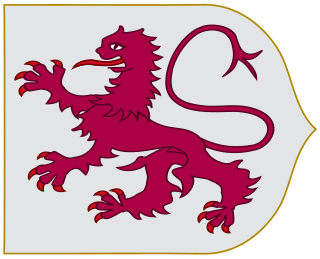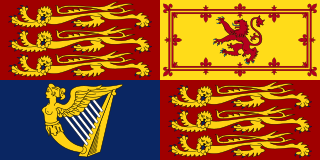This is a list of the queens consort of the Kingdom of Asturias .

The Kingdom of Asturias was a kingdom in the Iberian Peninsula founded in 718 by the Asturian chief Pelagius of Asturias. It was the first Christian political entity established after the Umayyad conquest of Visigothic Hispania in 718 or 722. That year, Pelagius defeated an Umayyad army at the Battle of Covadonga, in what is usually regarded as the beginning of the Reconquista. Pelagius died in Cangas de Onís, where he had his court in 737. His son Favila was killed while hunting, torn to pieces by a bear, and was succeeded by Alfonso I, son-in-law of Pelagius, who set about pushing the Reconquest as far as Galicia and Tierra de Campos. Fruela I (757–768) founded Oviedo. He was assassinated, and was succeeded by several petty kings and at last Alfonso II, the Chaste, who set up his court at Oviedo, and recommenced the expeditions against the Muslims. The Vikings invaded Galicia in 844 but were expelled by Ramiro I from A Coruña. Many of the Vikings' casualties were caused by the Galicians' missile-throwing war machines; 70 Viking ships were captured and burned. Vikings returned to Galicia in 859, during the reign of Ordoño I; they were faced with an army led by Don Pedro who dispersed them and destroyed 38 of their ships. Alfonso III, the Great, continued the forays as far as the Sierra Morena, and founded Burgos, the future capital of Castile. The Kingdom of Asturias transitioned into the Kingdom of León in 924, when Fruela II of Asturias became king with his royal court in León.
| From | to | Name | Notes |
|---|---|---|---|
| ? | 737? | Gaudiosa | traditional wife of King Pelayo, not historically attested |
| ? | ? | Froiliuba | wife of King Favila |
| 739 | 757? | Ermesinda, daughter of Pelayo | wife of King Alfonso I |
| ? | ? | Munia | wife of King Fruela I |
| 774 | 783 | Adosinda, daughter of Alfonso I | wife of King Silo |
| ? | ? | Usenda | traditional wife of King Bermudo I, perhaps a confused rendering Adosinda, wife of Silo |
| 842 | aft. 848 | Paterna of Castile | wife of King Ramiro I |
| 850 | 866 | Muniadona | wife of King Ordoño I |
During the reign of Ordoño I (850–866), the Kingdom of Asturias progressively came to be known as the Kingdom of León. The kingdom was split in 910 and Fruela received the part which kept the name of Asturias.

The Kingdom of León was an independent kingdom situated in the northwest region of the Iberian Peninsula. It was founded in AD 910 when the Christian princes of Asturias along the northern coast of the peninsula shifted their capital from Oviedo to the city of León. The County of Castile separated in 931, the County of Portugal separated to become the independent Kingdom of Portugal in 1139 and the eastern, inland part of León was joined to the Kingdom of Castile in 1230.
| From | to | Name | Notes |
|---|---|---|---|
| 869/870 | 910 | Jimena of Pamplona | wife of King Alfonso III |
| 911 | ? | Nunilona | wife of King Fruela II |
| 917 | ? | Urraca bint Qasi | wife of King Fruela II |
For the later consorts, see the list of Leonese Queen Consorts .




